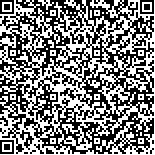下载中心
优秀审稿专家
优秀论文
相关链接
摘要

本文基于菲涅尔反射公式,结合现有的偏振反射模型对单叶与植被多角度偏振测量结果与理论结合进行分析;通过研究发现,偏振反射在前向散射方向可以通过菲涅尔反射公式进行解释,但是,在后向散射方向则需要考虑其他物理机理。此外,传感器获取的植被偏振信息既可以作为一种“噪声”来剔除,剔除后在可见光波段将相对误差从原来的30%降低到20%以内,又可以作为额外有效的信息源表征植被的结构特征:通过模型参数的大小判断冠层形态的平整程度。本文可以作为植被偏振探测的系统化方法,并且给出植被固有的偏振反射效应规律,即植被越平展光滑,产生的偏振信息越多;同时也将偏振光遥感在植被监测中的有效性凸显出来,即偏振信息的剥离有助于提升双向反射模型的计算精度。
In this study, we investigate the relationship between polarization and the structural property of vegetation covers to deepen our understanding of the physical mechanism of multiangle polarized light from natural surfaces, which is basic for describing the properties of Earth's surface using polarized remote sensing.
In this study, we explain the physical mechanism of the polarization properties of vegetation on the basis of the Fresnel equation and its derivative polarized reflectance models and compare them with the polarization measurement results of a single leaf and two vegetation covers, which are measured using a goniometer system.
The Fresnel equation is effective for explaining the polarization of vegetation in forward-scattering directions, however, other theories should be considered in explaining polarization in backward-scattering directions. The polarization of vegetation covers can be considered as "noise" when we use the photometric signal, such as the separation of specular portion (which is computed by bidirectional polarized reflectance factor) from the total reflectance factor, which decreases the difference between BRF model results and measured results from 30% to 20%. Moreover, it possesses potentially useful information, such as the relationship between model parameter and vegetation cover roughness, which can characterize the structure of vegetation covers.
Investigating the polarization of vegetation contributes to the understanding of the optical property of natural surfaces and potentially provides an additional and effective method for remote-sensing applications of vegetation covers. Our study also potentially provides a method for measuring the polarization of vegetation covers and demonstrates the physical rules of polarization in vegetation covers, such as the flatter the vegetation samples, the more polarization can be measured, and separating polarization from the total reflectance factor contributes to the improvement of the ability of current BRF models to simulate vegetation reflection. These results highlight the efficiency of polarized remote sensing on characterizing natural surfaces such as vegetation covers.

